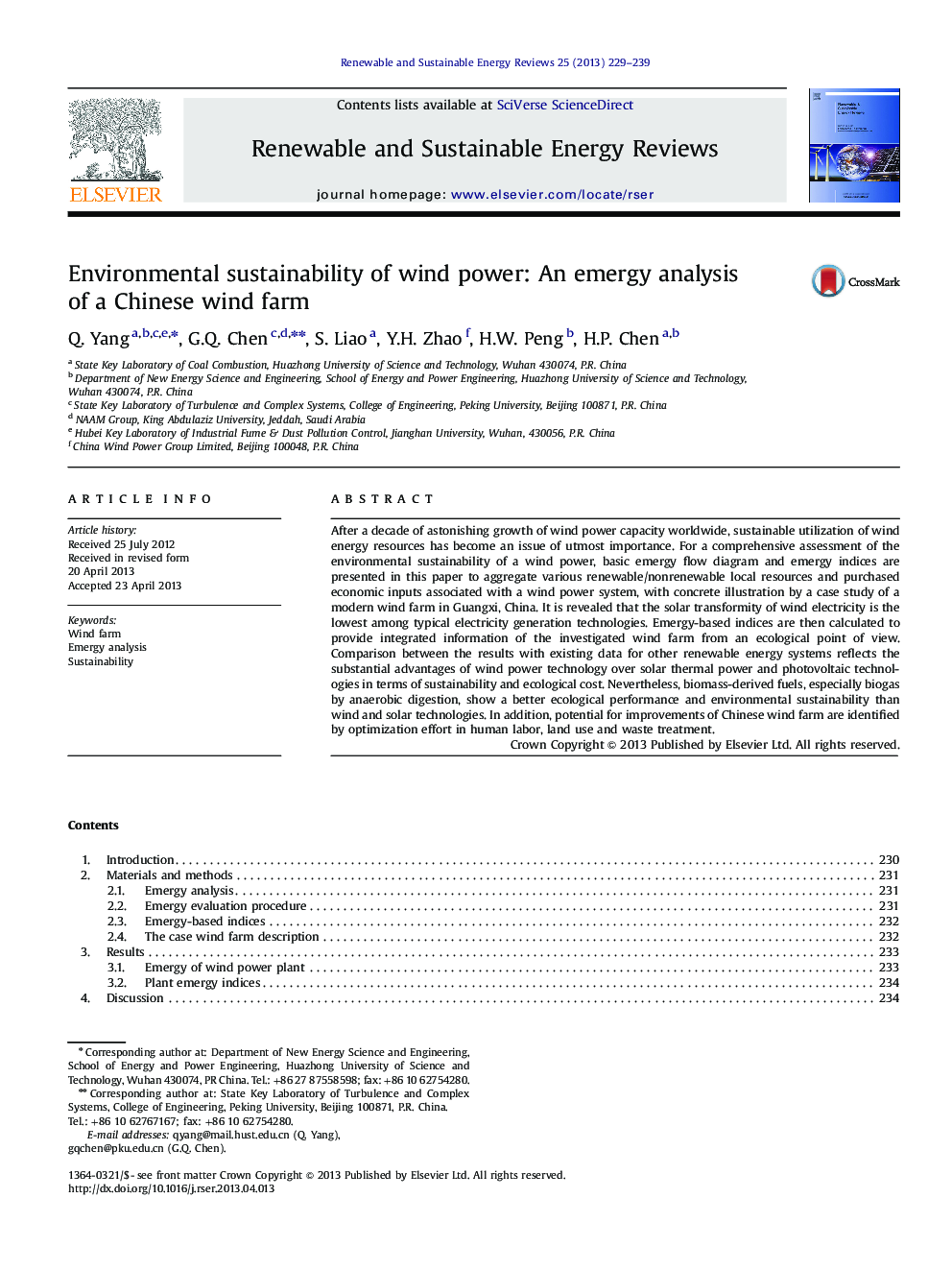| Article ID | Journal | Published Year | Pages | File Type |
|---|---|---|---|---|
| 8121522 | Renewable and Sustainable Energy Reviews | 2013 | 11 Pages |
Abstract
After a decade of astonishing growth of wind power capacity worldwide, sustainable utilization of wind energy resources has become an issue of utmost importance. For a comprehensive assessment of the environmental sustainability of a wind power, basic emergy flow diagram and emergy indices are presented in this paper to aggregate various renewable/nonrenewable local resources and purchased economic inputs associated with a wind power system, with concrete illustration by a case study of a modern wind farm in Guangxi, China. It is revealed that the solar transformity of wind electricity is the lowest among typical electricity generation technologies. Emergy-based indices are then calculated to provide integrated information of the investigated wind farm from an ecological point of view. Comparison between the results with existing data for other renewable energy systems reflects the substantial advantages of wind power technology over solar thermal power and photovoltaic technologies in terms of sustainability and ecological cost. Nevertheless, biomass-derived fuels, especially biogas by anaerobic digestion, show a better ecological performance and environmental sustainability than wind and solar technologies. In addition, potential for improvements of Chinese wind farm are identified by optimization effort in human labor, land use and waste treatment.
Related Topics
Physical Sciences and Engineering
Energy
Renewable Energy, Sustainability and the Environment
Authors
Q. Yang, G.Q. Chen, S. Liao, Y.H. Zhao, H.W. Peng, H.P. Chen,
